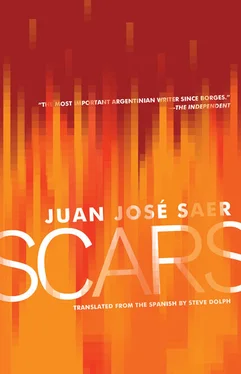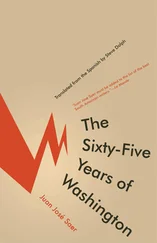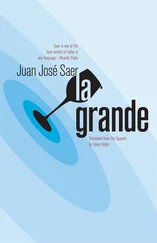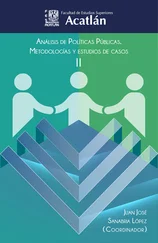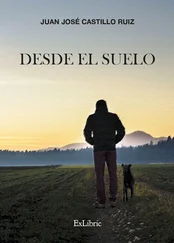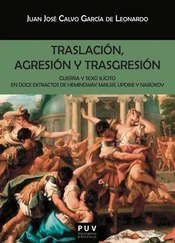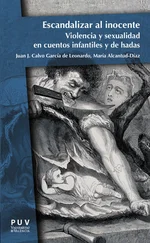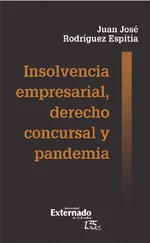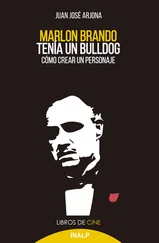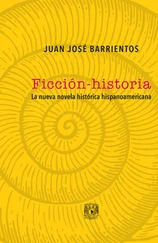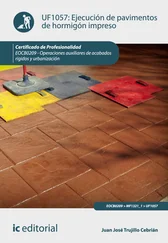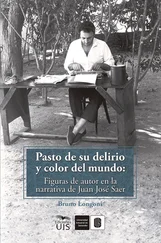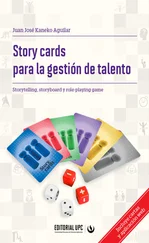Juan José Saer - Scars
Здесь есть возможность читать онлайн «Juan José Saer - Scars» весь текст электронной книги совершенно бесплатно (целиком полную версию без сокращений). В некоторых случаях можно слушать аудио, скачать через торрент в формате fb2 и присутствует краткое содержание. Год выпуска: 2011, Издательство: Open Letter, Жанр: Современная проза, на английском языке. Описание произведения, (предисловие) а так же отзывы посетителей доступны на портале библиотеки ЛибКат.
- Название:Scars
- Автор:
- Издательство:Open Letter
- Жанр:
- Год:2011
- ISBN:нет данных
- Рейтинг книги:5 / 5. Голосов: 1
-
Избранное:Добавить в избранное
- Отзывы:
-
Ваша оценка:
- 100
- 1
- 2
- 3
- 4
- 5
Scars: краткое содержание, описание и аннотация
Предлагаем к чтению аннотацию, описание, краткое содержание или предисловие (зависит от того, что написал сам автор книги «Scars»). Если вы не нашли необходимую информацию о книге — напишите в комментариях, мы постараемся отыскать её.
explores a crime committed by a laborer who shot his wife in the face; or, rather, it explores the circumstances of four characters who have some connection to the crime. Each of the stories in Scars explores a fragment in time when the lives of these characters are altered, more or less, by a singular event.
Scars — читать онлайн бесплатно полную книгу (весь текст) целиком
Ниже представлен текст книги, разбитый по страницам. Система сохранения места последней прочитанной страницы, позволяет с удобством читать онлайн бесплатно книгу «Scars», без необходимости каждый раз заново искать на чём Вы остановились. Поставьте закладку, и сможете в любой момент перейти на страницу, на которой закончили чтение.
Интервал:
Закладка:
After dinner, we go back to the study. I put Schönberg’s Concerto for violin and orchestra on the record player, and we sit down to listen. Ángel takes on a grave expression, sunk in the chair, his legs stretched out toward me — I’m sitting on the twin sofa, my back to the window — and every so often he takes a sip of whiskey. He looks completely absorbed in the music. I don’t look away from him for a single moment, but he avoids my gaze. When the concerto finishes, he gets up and approaches the window. I follow, and stop very close behind him. “Now, after the music,” I say, “there is an immense silence.” I take the whiskey from his hand, brush his fingers with mine, and take a sip. Then I return the glass and pour myself a drink and sit back down. He continues standing in the center of the room, between the chair, the sofa, and the desk. He asks if I’ve sent many men to prison recently. “None,” I say. Then we’re silent again. I examine him, completely. Then he starts talking about things he has seen in the sky, in the moon. He’s lying. When he leaves, an hour later, I get in bed and turn off the light. No sounds reach me, not a single trace of light enters the room. I’m in complete darkness and silence. My mind is empty.
Then I see wide fields of wheat burning soundlessly. Their crackling is muted. The flames are low, even, and the fire extends to the horizon. There are no trees, or slopes, nothing. Just a flat plain covered with yellow wheat, over which extends the even flames cracking mutely.
I wake up early, before dawn. I get dressed and go out. There’s a light rain. The sun is coming up. The inside of the car is freezing. It takes two or three tries before the engine turns over. Finally it does. The blue dawn air is filled with fine droplets of rain that condense and rotate slowly around the spheres of light. The park is deserted, and the motionless trees imprint their complex black patterns against the blue penumbra. I turn on the headlights, illuminating the empty street, their beams of light colliding, at a distance, with a curve in the road. Then I start. At the corner I turn onto the rough cobblestones that make the car vibrate and shudder, then right onto San Gerónimo, to the north. As I pass between the Plaza de Mayo and the courthouse, I see the first gray daylight concentrating around the tall tops of the palms, their broad metallic leaves shining, fragmentary. I turn onto the Avenida del Sur, heading east, drive a block and then, when the green traffic light allows me passage, I turn onto San Martín. I drive north down the empty street. The wiper blades rhythmically sweep the glass. The tiny droplets collide against the glass and break apart, blurring it momentarily. The wiper blades pass again, rhythmically, the glass is cleaned, and the street appears ahead, clear again. If I turn my head I can see, through the side windows, soaked and covered with drops of water, the facades of buildings sliding backward to my left and right. I pass the municipal theater, to my right, and then, father on, the arcade corridors, empty and dark, and farther still the dark windows of the La Región building, whose illegible news boards are submerged in the penumbra. When I reach the boulevard I turn right, driving slowly. At the taxi stand on the corner with 25 de Mayo four taxis are parked, their red lights on. The gorilla drivers are barely visible through the half light in their cars. A gray sphere of rain covers the entire city, a hazy transparency of suspended fine droplets concentrated around the tree tops. The red light at the next intersection forces me to stop. Around the light the drops take on a reddish color then turn suddenly green when the light changes. I cross the empty streets and pass the flour mill to my right behind the tall trees of the boulevard’s center walkway. The second traffic light forces me to stop. As the green light comes on, a bus crosses the boulevard full speed, forcing me to stop abruptly just as I’m starting up. I move again. An old gorilla in ragged overalls is sitting on a bench in the center walkway, protected from the rain by the trunk of a eucalyptus. He is digging through a bag. I pass very close to him, on his right, alongside the curb of the walkway. The blackish tree bark drips water and glows darkly at moments. Then I see the train station, its tall windows illuminated and its bright lobby casting light onto the street through the enormous main entrance. Its tall, solid facade slides slowly backward, to my right. I cross several streets, watching the suspension bridge approach. Its columns, first visible at their highest point, send out their four red signals that flash on and off. As I advance, the top edge of the windshield cuts off more and more of the bridge. First the red lights disappear, then the first rods that connect the lateral columns. When I reach the mouth of the bridge itself, all that’s left is the railings, the base of the columns, the gray stone ramp, the thick, tense cables that rise in a cluster toward the sky, and the gray sentry box, on the sidewalk to the left of the ramp, empty. A weak glow filters into the rain outside. By the time I turn onto the waterfront and begin traveling down the asphalt that’s covered in cracks, potholes, and tar patches, the sun has come up. The morning light comes from the river side, and beyond the even balustrade, interrupted ever so often, at regular intervals, by a staircase landing, I briefly make out the silvery glow of the river, where the gray sheen on the surface tends to smooth out the ripples produced by the gentle breeze and rain. The poplars on the central walkway of the waterfront, beyond which the villas project, between the foliage, their red roofs soaked with rain against the gray background of the sky, form outlines with their sharp, brown, wet needles. I enter the new waterfront and to my left the gray river expands, widening, blending with the sky at the horizon. The river and sky appear to be the same surface, without transition. I accelerate slightly. The monotonous hum of the engine intensifies and then stabilizes at the higher velocity. Under the yellow bus stop shelter, in the center of the wide avenue, a gorilla in a raincoat smokes, slowly. Another leans against the wall, its legs crossed at the calves. They look up and follow the path of the car, turning their heads slowly. I pass a bus traveling in the opposite direction, toward the city center. It’s almost empty, but I manage to make out the blurry, abstracted faces of three or four gorillas, males and females, looking toward the river through the wet windows. The roundabout at Guadalupe approaches, the gray-colored power plant beyond. Its metallic, fluted blinds are lowered. The gray door is shuttered, and dense, humid, and stationary patches form on the wet facade. I circle the roundabout, leaving the facade of the power plant behind, and turn again onto the new waterfront toward the city center. I pass behind the yellow shelter, to my left now like the river and the slope, where a row of pines glows deep green, contrasting against the gray sky, condensing whitish masses around it. The black trunks grow straight and their branches form perfect triangles curving slightly upward at the bottom ends. Beyond the trunks, the river blends with the sky. I reach the old waterfront and slow down slightly. The sound of the engine returns and stabilizes, monotonous, after it has diminished. The arc of the wiper blades continues, regularly sweeping the small drops that fall and collide on the windshield. In the distance I see the bridge, the full length of it, its tall columns. On the bridge a tiny, green truck advances slowly toward the city. It leaves the bridge, turns, and accelerates toward the harbor road. I pass the mouth of the bridge — at the entrance of the sentry box there is now a gorilla watchman in a black, waterproof cap — and continue toward the harbor road, watching the backward slide of the waterfront plaza, its arbors covered in vines. The red paths of the plaza are covered with dead leaves flattened by the rain. On the harbor road the rough cobblestones make the car shudder and vibrate. The green truck is two blocks ahead. I accelerate slightly and approach behind it. A large puddle of water that covers the street forces me to slow down, and as I cross it I hear the sound of the water under the tires and see the side windows getting sprayed with droplets. The truck has recovered the distance. I accelerate again and soon I’m right behind it. Less than six meters separate us. Then I make a slight movement, shifting the car to the right — we are in the left lane, alongside the center flowerbeds from which the tall palms grow — and accelerating suddenly I come even with the truck and then leave it behind. For two blocks I don’t slow down. I sense the intense reverberations in the car as it moves over the rough cobblestones. Then I slow down again. Reaching the city center, I pass the illuminated post office and the depths of the bus station, where many gorillas are gathered, carrying suitcases, or waiting on the platforms or in line at the ticket windows. At the first corner I turn right. Two blocks later I cross San Martín, continuing straight. I pass the central market and farther on the municipal buildings, their narrow front plaza shadowed by the trees. To my left the broad staircase to the entrance slips backward, beyond the trees in the plaza and the empty parking lot. I continue straight, to the west, passing intersection after intersection. Gorillas fill the sidewalks, the entrances to shops, the street corners, their thresholds. Two young gorillas, high school students surely, wait on a corner carrying books and folders under their arms. A child gorilla in a duster crosses the street, holding his mother’s hand. She looks fearfully in my direction, afraid that I’ll turn toward them, and then decides to cross when she sees me continue ahead. An old gorilla in a bathrobe picks up an empty trashcan and takes it inside his house. Another gorilla, also old, looks out at the rain through a window. I reach the Avenida del Oeste, turn left, and drive past the regimental gardens to my right. Beyond the trees that grow from perfectly manicured flowerbeds, I see a gray building, the armory. The sidewalk is interrupted suddenly at the entrance, where two soldiers, rifles on their shoulders, stand guard, pacing in front of the gate. I leave the armory behind. Next to me, on the seat, is the closed briefcase. At the Avenida del Sur I turn east. Paradoxically, the daylight has faded. I wait briefly for the traffic light to change from red to green and then I cross the intersection. Before reaching the next corner I turn right onto the sidewalk and enter the narrow, cobblestone rear courtyard of the courthouse. Two or three cars are there, empty. I turn off the engine and stop hearing its hum at the same moment as the wiper blades stop. Then I pick up the briefcase and get out. Water hits me in the face, fine, cold droplets that explode on my skin. I reach the lobby, empty but for two gorillas sitting on a bench next to the right staircase. I pass the open doors to the elevator. The operator, sitting on a stool, his hand resting on the control lever, watches me pass and greets me indifferently. I start up the wide marble staircase, resting my right hand on the wooden banister that caps off the iron railing. When I reach the third floor I stop and look down at the empty square of black and white checkerboard tiles and the two figures sitting on the bench, next to the staircase. Then I continue down the corridor and into my office.
Читать дальшеИнтервал:
Закладка:
Похожие книги на «Scars»
Представляем Вашему вниманию похожие книги на «Scars» списком для выбора. Мы отобрали схожую по названию и смыслу литературу в надежде предоставить читателям больше вариантов отыскать новые, интересные, ещё непрочитанные произведения.
Обсуждение, отзывы о книге «Scars» и просто собственные мнения читателей. Оставьте ваши комментарии, напишите, что Вы думаете о произведении, его смысле или главных героях. Укажите что конкретно понравилось, а что нет, и почему Вы так считаете.
